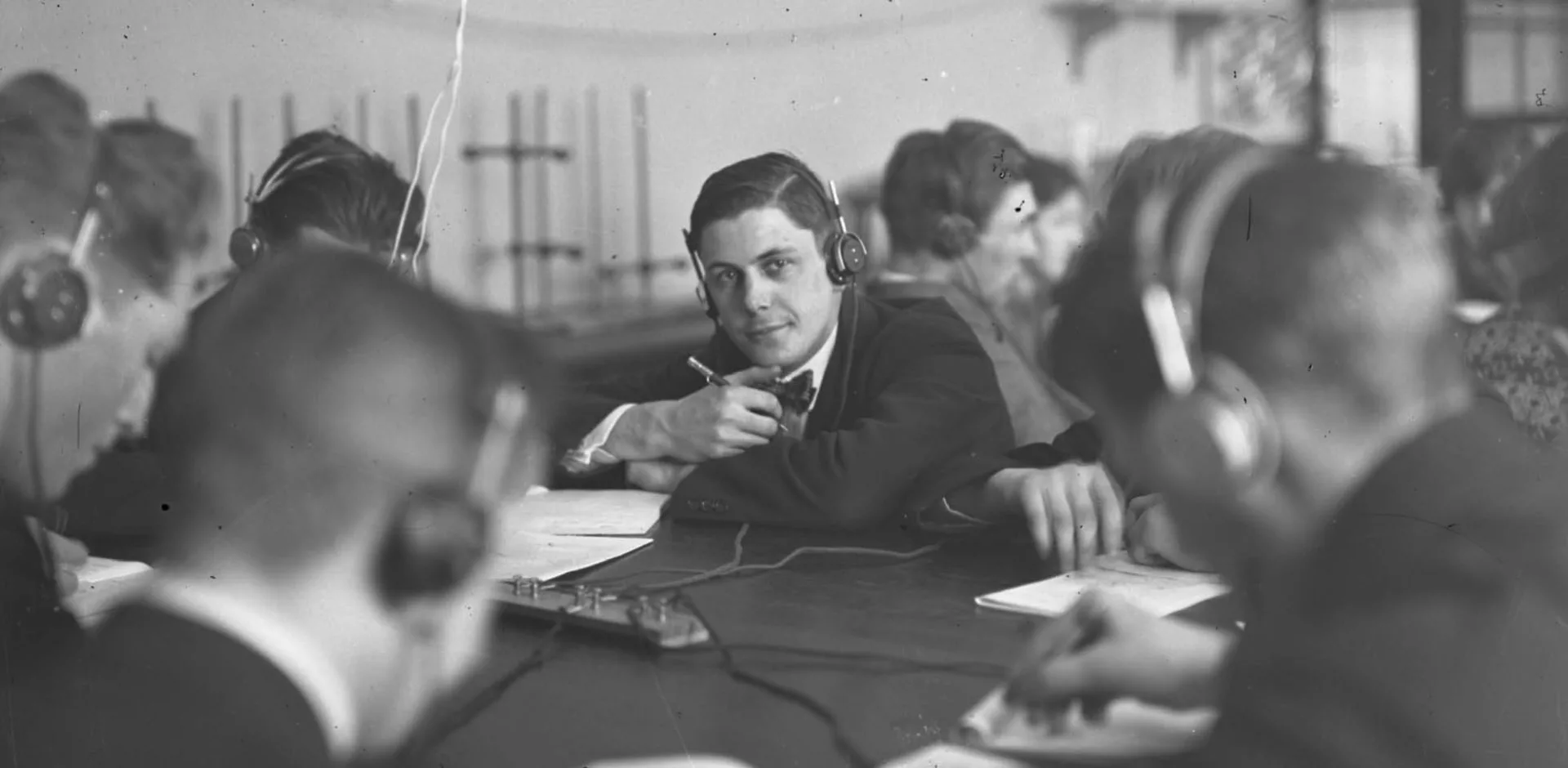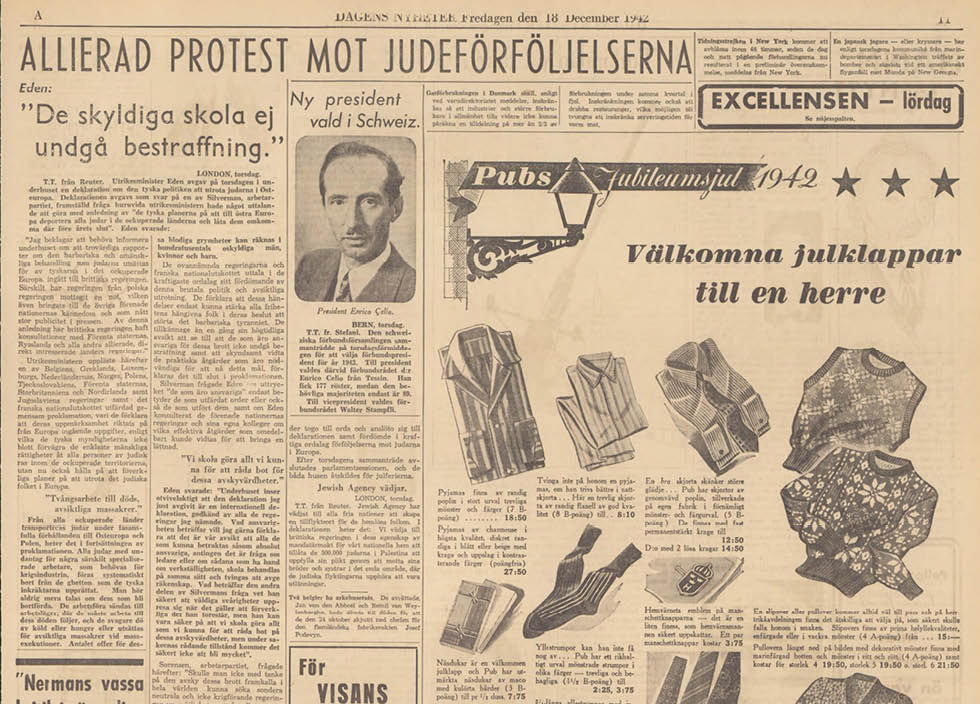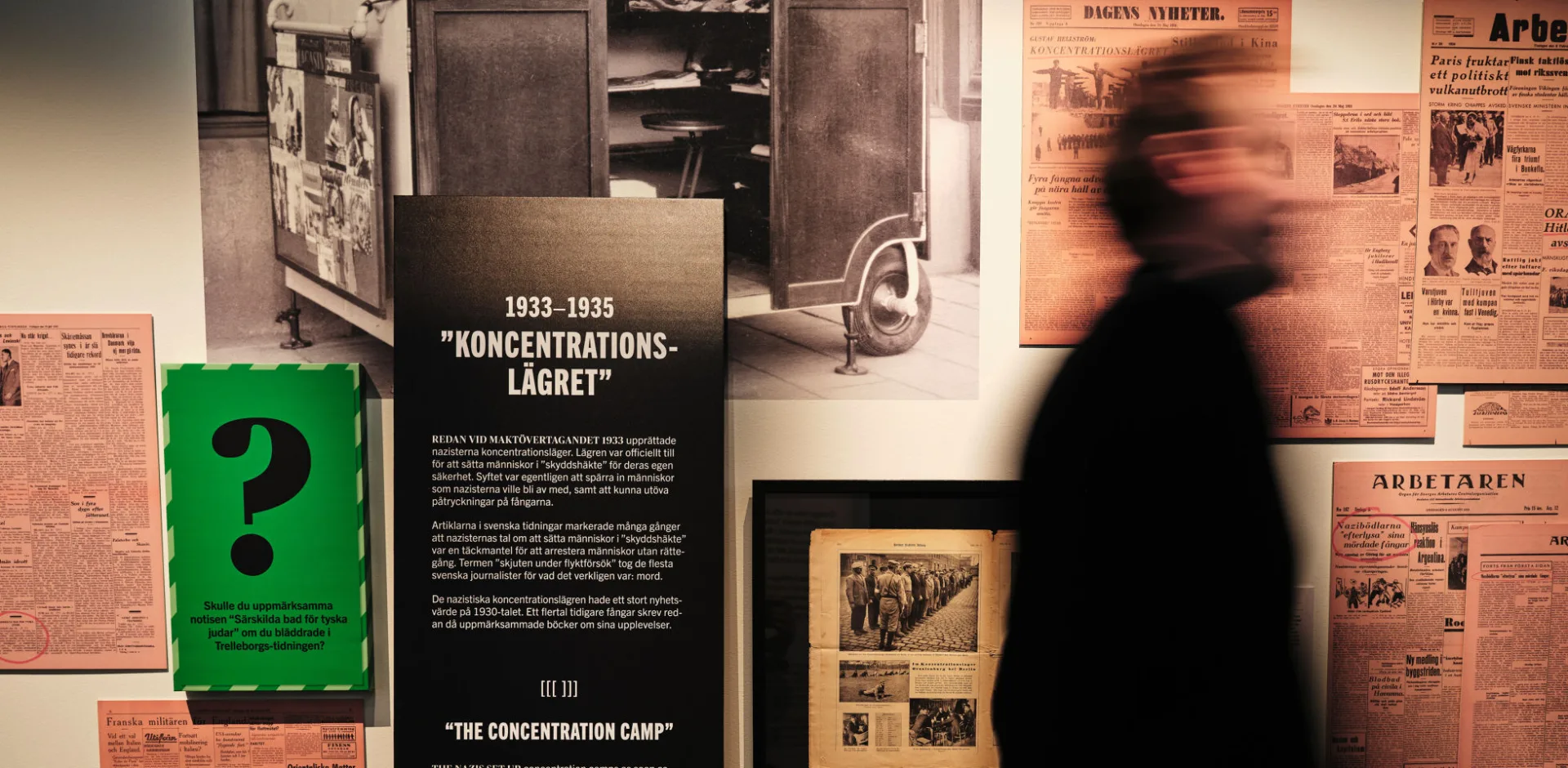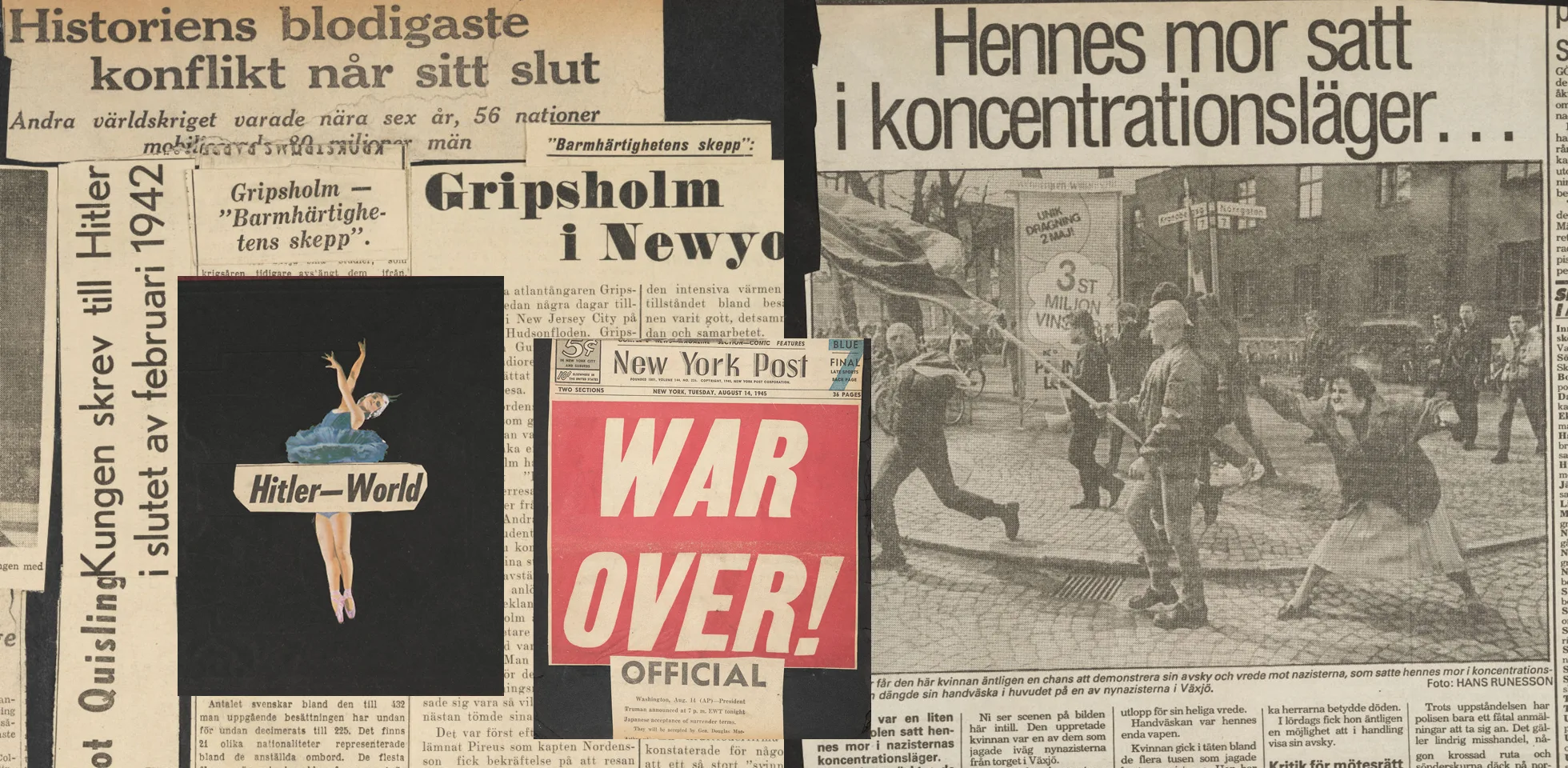The exhibition In Black and White explores Swedish media and the Holocaust – what was written and broadcasted, but also what was erased or edited out. Here, you can also learn more about the spirit of the times, the Swedish media landscape, and the presence of antisemitism.
Sweden was, just as it is today, a country of many voices and opinions. Through a selection of headlines and articles from the country’s largest newspapers, as well as radio segments and newsreels, you can follow the Swedish media coverage of the Holocaust. The exhibition recounts the Nazis’ rise to power, the persecution of Jews, the deportations, and, finally, the liberation of the death camps. It also highlights some of the most influencial voices of the time.
In black and white, what was written about the Holocaust? Did the news coverage influence people in Sweden? And what is the difference between reading, knowing, and understanding?


Audioguide
You can listen to the audioguide while visiting the exhibition or before your visit.
Header image: Collage: Headlines from Trelleborgs-Tidningen, Dagens Nyheter and Svenska Dagbladet.
Before your visit
Visit the exhibition at the Swedish Holocaust Museum, Torsgatan 19, Stockholm. Free admission. The exhibition opened on April 25, 2025.


